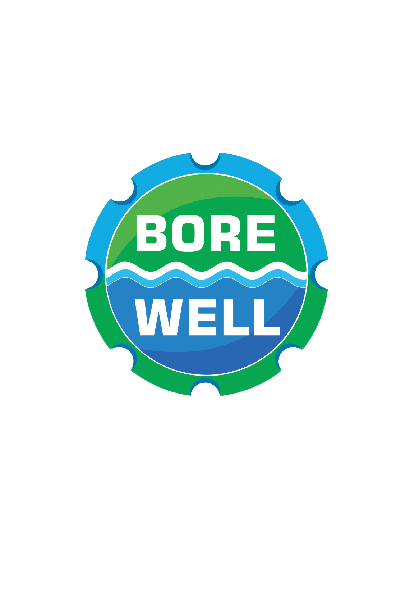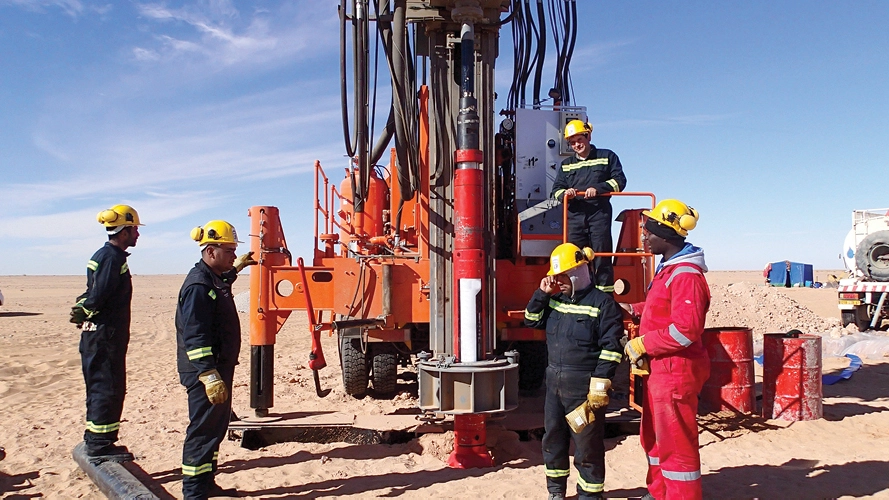Selecting the right borewell drilling location is crucial for obtaining clean and abundant groundwater, taking into account geological conditions, water table levels, and potential contaminants. The optimal spot ensures efficient and sustainable water extraction, preventing issues like low yield or contamination. The right location not only guarantees a reliable water source but also contributes to the long-term success and functionality of the borewell.
Factors Influencing Borewell Drilling Site Selection
Borewell drilling site selection involves factors like soil type, water depth, and nearby harmful substances to ensure a reliable, clean water source and a smart, accessible location for drilling. In essence, the goal is to find the best location for drilling.
1. Geological Considerations
Geological considerations are crucial when selecting the right borewell drilling location. Understanding the type of soil and rocks in the area affects water flow and borewell capacity. Finding the ideal drilling location increases the possibility of getting into a consistent and sustainable groundwater supply when these factors are taken into consideration. This strategy is comparable in identifying Borewell Drilling Site. Count on the best geological survey services in India to help you discover the ideal geological location.
2. Hydrogeological Factors
Hydrological factors are important in borewell drilling site selection. Groundwater depth and aquifer identification are key factors. Groundwater depth determines the depth needed to reach the water, while aquifer identification reveals the type of rocks and soil holding water. Understanding these factors helps pinpoint the ideal drilling location, ensuring the right depth and access to a reliable aquifer, akin to accessing clean and abundant groundwater.
3. Accessibility and Logistics
For the greatest efficiency and economic benefits, the location of the borewell drilling project must be carefully considered. Two crucial elements are terrain analysis, which determines whether the land is hilly or level, and accessibility to infrastructure, such as roads and electricity. These elements guarantee a seamless drilling procedure to enhance its practicality and convenience, and increase its efficiency and cost-effectiveness.
Environmental Impact and Regulations
Identifying Borewell Drilling Site involves considering environmental impact and adhering to regulations. This involves considering nearby plants, animals, and water sources, as well as adhering to rules to protect nature and ensure clean water access. The choice of a drilling site is not just about obtaining water, but also about being kind to the environment and adhering to rules.
1. Environmental Concerns
For borewell drilling site selection, it’s crucial to consider environmental concerns. This involves avoiding areas near rivers, lakes, or chemicals that could harm the environment. The chosen location should not only provide water but also prevent contamination, ensuring a responsible and eco-friendly approach to accessing groundwater. By considering these concerns, drilling sites can be chosen with care.
2. Regulatory Compliance
Selecting the right borewell drilling location involves not only soil and water but also adhering to environmental rules. Regulatory compliance involves following local and national guidelines set by authorities, which involves a Permitting Process. This process ensures the green light before digging, protecting the environment by preventing potential harm or contamination. Adhering to these rules not only ensures the right decision but also plays a crucial role in ensuring environmental protection.
Community and Social Considerations
Choosing the ideal borewell drilling site involves more than just technical aspects; it also involves being a good neighbour. This involves conducting a Community Needs Assessment, considering the community’s wants and concerns, and conducting a Social Impact Assessment to ensure drilling doesn’t block sunlight. Thus, identifying borewell drilling site involves being a good community member and considering the impact of your decisions.
Technology and Tools for Site Assessment
Technology plays a crucial role in selecting the right borewell drilling location. Remote Sensing and GIS applications provide a super-powered map, revealing underground secrets. Groundwater modelling predicts water’s hiding and movement, while modern surveying techniques accurately measure and map land. These tools make identifying the borewell drilling site a precise and efficient mission, ensuring water is targeted where it matters most.
Case Studies
I’m Rajesh, a farmer in rural India, I faced difficulties in borewell drilling site selection. After several unsuccessful attempts, I got professional help from a reputable borewell services provider. The experts assessed geological conditions and suggested an optimal drilling site. Despite challenges, the best borewell services in India navigated that skillfully. I learned the importance of relying on specialists for borewell services and also understood the critical role of site selection in the success of borewell projects. This successful drilling process provided a reliable water source for my agriculture.
Best Practices for Borewell Drilling Site Selection
To identify the ideal borewell drilling site, follow Best Practices, which are a step-by-step guide. These include Pre-Drilling Surveys, which ensure the terrain is known before drilling, Collaboration with Experts, which involves assembling a team of seasoned explorers, and Continuous Monitoring and Adaptation, which involves closely monitoring the drilling process and adjusting plans as needed. These practices are like having a well-thought-out game plan to guarantee success in finding the optimal spot for drilling. By following these best practices, you can create a well-thought-out strategy for borewell drilling site selection.
The guide “Finding the Perfect Spot” emphasises the importance of selecting the right borewell drilling location. It highlights the need for thorough pre-drilling surveys, collaboration with experts, and the use of modern technology like remote sensing and GIS applications. It also stresses the importance of community and social considerations, ensuring the chosen site aligns with community needs and sentiments. Regulatory compliance is also emphasised to navigate environmental concerns responsibly. Adhering to best practices and continuous monitoring and adaptation is crucial throughout the process. In essence, identifying borewell drilling location involves a holistic approach that combines science, technology, community engagement, and responsible practices.

